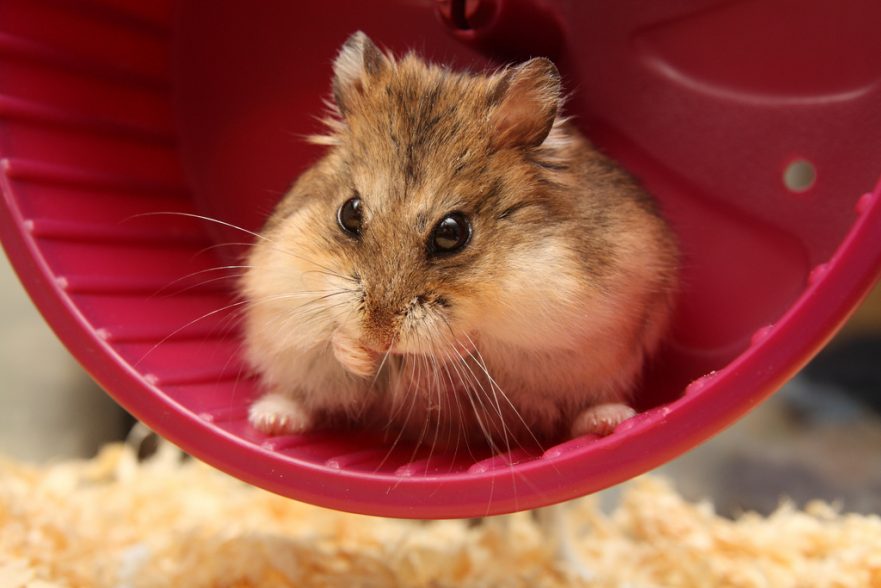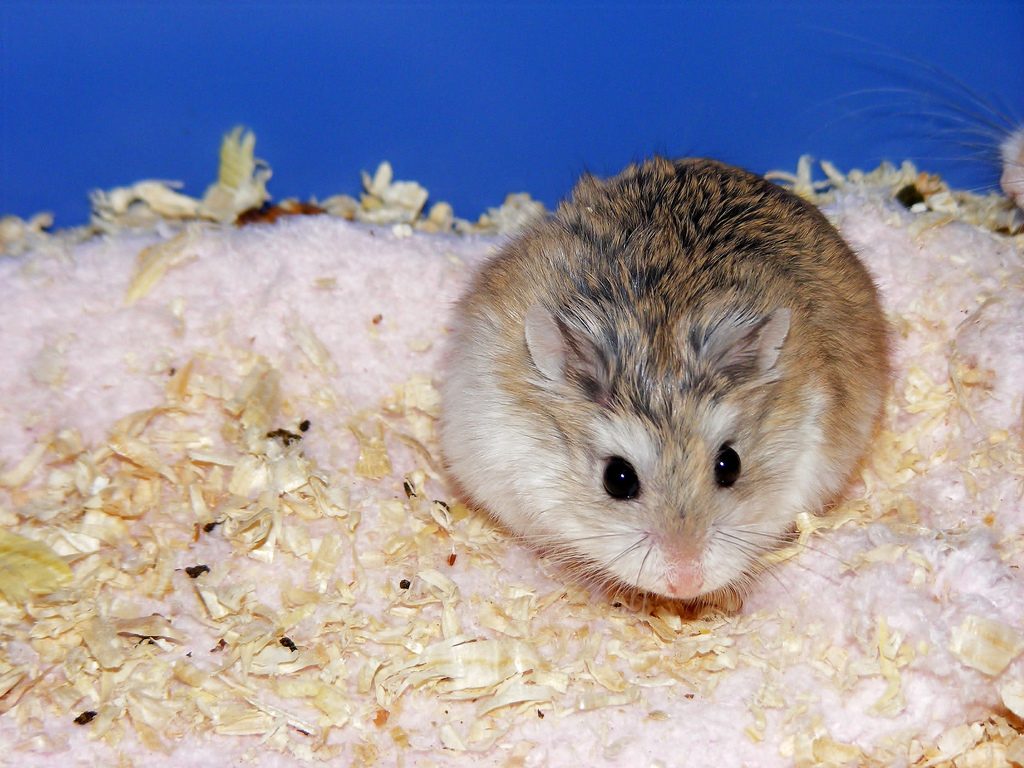Roborovski dwarf hamsters are amazing, full-of-personality little animals. Robo is becoming more and more popular as pets, and more and more shy people are bringing them home to care for.
This article will tell you everything you need to know about taking care of a Roborovski hamster, as well as some important facts. This page has everything you need to know about Roborovskis.
About Roborovski Hamsters (Robo)
Russia is where the Roborovski hamster comes from. It is the smallest and shyest type of hamster, and many people think it is the cutest.
Most of these cute little hamsters’ activity happens at night and early in the morning. They are very curious and like to play.
They will try just about anything. They like having many toys to play with.
You can find these hamsters all over the world, but they are harder to find than the typical Syrian (golden) or Russian dwarf hamster.
You can put them in small groups or leave them alone (preferably of the same sex to prevent unwanted breeding and fighting).
Robo Hamster Behavior and Temperament
Robo hamsters are usually awake at night. They wake up around dusk and stay busy all night.
Even though they sometimes make very soft sounds, it might be the way they move at night that bothers some people.
If you don’t sleep well, you might not want to keep their cage in your bedroom.
These hamsters are pretty easy to take care of as pets, and they can be fun to watch. But they aren’t very cuddly, and they don’t like to be handled much.
They are usually calm, but if you scare them, they might bite.
Still, they can learn to recognize their owners and might come to you if you’re near their enclosure (especially if you have a treat).
They shouldn’t live with other pets, but they can live with other Robo hamsters in pairs or small groups of the same gender.
If they are raised together from a young age, they get along best. If not, there could be some problems over land.
Details about sizes
Robo hamsters are about two inches long and weigh about an ounce. They are less than an inch long when they are born. Around 2 months old, they become adults.
Housing
Choose a cage that is at least 2 feet long, 1 foot wide, and 1 foot high.
Bigger is always better since this is where your pet will spend most of its time and where it will get the most exercise and mental stimulation.
Most of the time, a glass or plastic aquarium with a secure top that lets air in or a wire cage with a plastic base can be used as a habitat.
Make sure the space between the wires isn’t big enough for your hamster to get through.
At the very least, you should give your hamster chew toys and a running wheel with a solid surface, not bars.
And give your hamster a nest or a place to sleep where it can feel safe. Also, keep the enclosure out of direct sunlight and draughts.
Needs of Each Substrate
Add about 1 to 2 inches of bedding to the bottom of the cage. You can use aspen shavings or shredded paper that doesn’t have any chemicals or dyes.
Do not use cedar or pine shavings or anything made from corncobs as bedding, as this can be bad for your health.
What do Robo Hamsters eat and drink?

Choose a commercial food for hamsters that is made especially for dwarf hamsters. Follow the feeding instructions on the label and talk to your vet about how much to give.
In general, you should put food in a small dish and feed your hamster every day.
The best time to do this is when the hamster is just waking up in the evening. Food that hasn’t been eaten in 24 hours should be thrown away.
You can also give them small amounts of extra foods like seeds, grains, fruits, and vegetables. Oats, blueberries, and carrots are some choices.
Talk to your vet about what your hamster should eat and how much you can feed it. After a few hours, take out any food that will go bad if it stays in the enclosure.
Lastly, your hamster should always have access to fresh water. You can put it on a small plate or in a bottle. Most of the time, a bottle will be cleaner, but not all hamsters will know how to use it at first.
Keep both a water dish and a bottle in the habitat until you’re sure the hamster will drink from the bottle.
Common Health Problems
Hamsters can get sick with a number of things, such as:
- Most of the time, bacteria, parasites, fungi, or allergies are to blame for hair loss and skin problems.
- Another name for diarrhea is “wet tail.”
- Diseases of the lungs caused by infections or allergies
- Overgrown teeth are common in hamsters because they don’t have enough things to chew on to naturally wear them down.
Training
Handling your hamster calmly and gently from a young age can help it get used to being held, but some hamsters will never get used to it.
Don’t squeeze or shake your hamster when you have it in your hands. When you handle your hamster, sit on the ground in a safe place. Even if you’re only a few feet off the ground, you should never drop a hamster. The small animal could get hurt very badly.
To get your hamster to sit on your hands, hold a favorite treat and make the experience of being handled fun.
Exercise
If hamsters don’t get enough exercise, they can get fat and have other health problems. This is why you should give them an exercise wheel and as big of a pen as you can fit and afford.
Hamsters can also run around in exercise balls when they are not in their cage. Make sure the ball is right for a dwarf hamster, and keep an eye on it even when it’s not in its cage.
Grooming
Hamsters are usually clean and good at taking care of themselves. They don’t need to be washed.
But if dirt or other things get stuck in their fur, you can help them get rid of it by rubbing the fur gently with a damp cloth.
Upkeep Costs
The main things that will cost you money each month for a Robo hamster are its food and bedding.
Expect to pay between $20 and $40 a month, depending on the types you choose and how big your enclosure is. You’ll also have to replace chew sticks, nests, and other toys from time to time.
On average, this will cost you about $10. Also, include in your budget the cost of an annual vet checkup and vet care in case of an emergency.
Pros & Cons of Keeping a Robo Hamster as a Pet
Robo hamsters are interesting little pets that are fun to watch and not too hard to take care of. They also don’t make much noise and don’t take up much space.
But they’re not the most cuddly pets. And they are active at night, so you might not see them when they are doing the most.
Also, they can be hard to handle because they are so small, quick, and fragile.
Purchasing or Adopting Your Robo Hamster
Find a reputable breeder or rescue group to get a Robo hamster from. They will be the best source of information about the animal’s health, history, and personality.
In many places, there are rescue groups that only help small animals. Sometimes, animal shelters also have hamsters that can be adopted.
You can expect to pay around $20, but this can change based on things like the animal’s age and how tame it is.
Reproduction/Breeding
A vet who works with exotic animals might know of a good place to get Robo hamsters. Look for a breeder who lets you see the animals before you decide which one to buy.
Try to find an animal that is alert and active, but remember that you might be visiting it when it would normally be sleeping.
It needs to be kept in a clean place with clean fur and clear eyes. Its waste should also be well-shaped.






